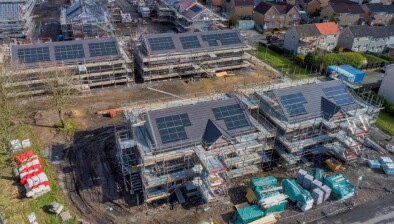Opinion: Student experiences of purpose-built student accommodation

Tom Moore, Jenny Preece and Jenny Hoolachan, detail their experiences of living in purpose-built student accommodation.
Demand for student accommodation in Scotland is growing, reflecting a long-term rise in the number of students in higher education. This rise in demand, combined with other market pressures related to supply and affordability, have brought attention to the planning, management and suitability of student accommodation. Universities are increasingly unable to guarantee accommodation for new students, there are suggestions that landlords in the private rented market are less willing to let to students, and there remains concern with the integration and impact of student housing into local communities. Purpose-built student accommodation (PBSA) has grown as a solution to student housing needs.
It is in this context that CaCHE, in partnership with colleagues at the University of Cardiff and Rettie and Co, were commissioned to review the quality, quantity and condition of purpose-built student accommodation and student experiences of living in it. This blog reports on one aspect of this review: the experiences of students. A survey and qualitative interviews were undertaken with students living in case study areas of Dundee, St Andrews, Edinburgh and Glasgow. The survey and interviews engaged with students at undergraduate and postgraduate levels of study and aimed to capture the experiences of different demographic groups. Further details on the methodology and elaboration of the findings can be found in the report published online by the Scottish Government. There is an additional blog summarising the report’s overall findings.
The study found that there is significant variation among students in terms of their experiences of PBSA. Many students suggested that they are attracted to living in PBSA by the simplicity of finding and applying for accommodation, the support offered by Universities, and assurance over the standards and convenience of PBSA relative to University amenities. There was not great awareness of local housing markets among students arriving at University and housing options tended not to form part of their decision-making over where to study. Students in later years of undergraduate study were attracted to live in PBSA due to difficulties in accessing the private rented sector, though this varied according to local housing markets.
Views on value for money were varied and contingent on the relative price of other forms of accommodation. While PBSA was generally perceived to be objectively expensive, students living in areas where private rented housing was in high demand tended to perceive PBSA as better relative value for money, while those in areas where private rents were lower were willing to trade this off for the positive attributes of PBSA living.
Those positive aspects of PBSA living tended to relate to the social element and opportunity to make friends through shared accommodation, as well as the simplicity of paying rents and utilities through a combined charge. Students that were particularly satisfied with their accommodation often placed high value on access to green space, natural light, ventilation, and the availability and presence of on-site wellbeing and security services.
However, it is important to note that PBSA living was not enjoyed or aspired to by all students. While many students valued aspects of shared living and communal space, experience of this varied according to household relationships, with some students dissuaded from using space where they did not have positive or comfortable relationships with those that they shared with. Not all students felt at ‘home’ living in PBSA, often as a consequence of poor household relationships or due to restrictions on personalisation and decoration of their living space. Other students living in different household types, such as those with families or those with pets, struggled to find accommodation. Students with long-term health conditions or access requirements also encountered difficulties, often due to issues of access, the suitability of accommodation, and expectations over the level of shared amenities and space. This emphasises the variation in student experiences.
Students also expressed concern at potential increases in rent, particularly in the context of rising utility costs. Many students were already reliant on forms of family support and employment during their studies to manage housing costs, but not all students had access to the support of families or were able to work while studying. There was also less awareness of tenancy rights among students living in PBSA than those living in the PSA, with some dissatisfaction with the perceived inflexibility of standard tenancy agreements in the PBSA sector. Postgraduate students also reflected upon difficulties in meeting their housing costs.
In light of these findings, it is clear that PBSA makes a significant contribution to student housing needs. However, there is a need to enhance the collection and availability of data on students’ economic circumstance and housing affordability. Our work has shown that financial precarity is intensifying and is of concern to students at all levels of study. Better data will enhance understanding and policy responses to mitigating the impact of the rapid increases to living costs felt by students. There may also be scope to improve the flexibility of tenancy agreements within the parameters of the existing models used by providers and benefiting students that require shorter tenancies. Finally, while the value of PBSA to many is clear, it is also the case that the cost of shared living of PBSA is not suitable for all students. It is critical that Universities and partners are alive to the diversity of student housing needs.
This article was originally published on the CaCHE website.









